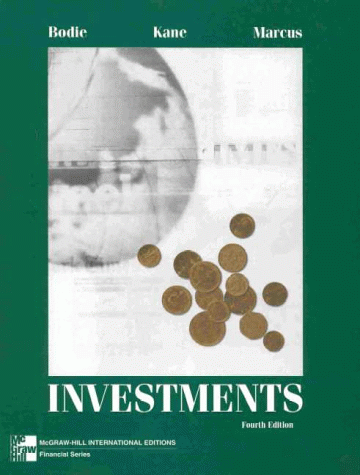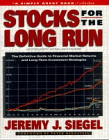Objectives - Course Resources -Prerequisites - Course Policies - Grades - Cases and Assignments - Investment Project - Schedule and Reading List - Links - Students' evaluation of the course
The main task of the course is to provide the students with intellectual and analytical framework that allows them to evaluate the “real world” of investments. We will focus mostly on the problems faced by investors in choosing among numerous available investment opportunities. Valuation models for stocks, bonds, and futures and successively examined. Both the theory and the empirical evidence are reviewed. Also, special topics, such as hedging, portfolio insurance, and behavioral biases are covered. The project is designed to give you “hands on” knowledge of major concepts in investments. The course is essential for any business professional that wants to make his career as investment banker or as a corporate treasurer.
Key Contacts:
Lecturer: Assistant
Professor Andrei Simonov, room 677, telephone +46-8-736 91 59; andrei.simonov@hhs.se
- Per Axelson, room 115, telephone +46-8-736 9385; finpa@hhs.se
- Andriy Bondaruk, room 115, telephone +46-8-736 9385; finab@hhs.se
Secretary: Ms. Eva Eklund, room 688, telephone +46-8-736 91 49, finee@hhs.se
Textbook:
 Z.
Bodie, A. Kane and A. Marcus, Investments, Paperback
- 992 pages (March 1999)
McGraw-Hill Publishing Company; ISBN: 0071160973. (Please
note that link to Amazon.com is provided for informational purposes only)
Z.
Bodie, A. Kane and A. Marcus, Investments, Paperback
- 992 pages (March 1999)
McGraw-Hill Publishing Company; ISBN: 0071160973. (Please
note that link to Amazon.com is provided for informational purposes only)
Class Notes and handouts.
Supplementary Materials:
- The Wall Street Journal, published daily by Dow Jones or The Financial Times.
- supplemental readings (listed below, available for signout)
- computational capabilities, especially spreadsheets, word processing, and access to web and electronic mail.
If you are thinking about career in Finance, I would strongly recommend the books below. I do not agree with some ideas expressed there, but they are still fun to read...
Robert Haugen, The New Finance: the Case Against Efficient Markets, Prentice Hall, 1999.
Jeremy Siegel,
Stocks for
the Long Run : The Definitive Guide to Financial Market Returns and Long-Term
Investment Strategies, McGraw-Hill, 1998.
Robert
J. Shiller, Irrational Exuberance, Princeton
University Press, 2000.
Peter L. Bernstein, Capital Ideas : The Improbable Origins of Modern Wall
Street, Free Press, 1993.
- Prerequisites
- Grades and Exams
- Cases and Assignments
-
 Students will be required to engage in a complete analysis of a set of
four out of six
cases during the quarter. They are all
available in the course packet. I have selected these cases so that they
relate closely to the subject matter in the lectures. Before each case
assignment, I will provide a series of questions on which the discussion and
written reports will focus. In addition, students are expected to turn in
three additional assignments (two problem sets and one computer exercise).
The details can be found HERE.
Students will be required to engage in a complete analysis of a set of
four out of six
cases during the quarter. They are all
available in the course packet. I have selected these cases so that they
relate closely to the subject matter in the lectures. Before each case
assignment, I will provide a series of questions on which the discussion and
written reports will focus. In addition, students are expected to turn in
three additional assignments (two problem sets and one computer exercise).
The details can be found HERE.
Presentations. I will arrange to have two separate study groups present their findings before the class on a subset of questions. Discussion time will also be allotted for questions and general discussion about the key issues in the case. These presentations will factor into the final grade. Several groups will satisfy this course requirement not during the case presentations but for their portfolio performance reports.
Written Reports. Each study group will also prepare a written report on the case. This will involve answers to the series of questions discussed above for the presentations. Each report should be typed, double-spaced and generally no more than 5 pages in length, not including tables and graphs. The report will be graded on the basis of the quality of the research, as well as of the professional presentation (neatness, clarity of exposition, etc.). I would encourage you to submit this report via email in Word with appended Excel graphs/charts in order to save paper. I will strive to give you feedback in the form of a memo, also via E-mail, which will record your grade. I will assign the same grade to each member of the group, unless there is a compelling reason to do otherwise. NB: Please note that for some case sessions the class will be divided into two parts. In this case, the deadline of submitting the case is the EARLIEST class date for BOTH groups.
- Course Investment Project
- Students will participate in a portfolio simulation exercise managing an
initial wealth stock of $100,000 over the quarter. The simulation program
will be professionally managed by Stock-Trak Portfolio Simulations of
Atlanta, GA. Students will join into groups and register an account as an investment team for the
five-week period. The price per
registered account is $17.95. Each team can invest in any NYSE, AMEX or
NASDAQ stock (with traded price over $5), a series of government and
corporate bonds, and a selection of over 2000 mutual funds. Trades can be
submitted via web. Students will receive bi-weekly statements
showing account activity, value, and performance versus the S&P 500
stock index, but each team should monitor the position daily. Students can
buy on margin and sell stocks short. Details are provided in the Student
Registration Materials.
More details can be found HERE
-
- Course Policies are described here
- Course Schedule is here
Basic knowledge and understanding of statistics concepts (variance, mean, covariance, correlation, regression analysis, etc) is required. If you do not feel comfortable with such tools, please look at http://www.duke.edu/~charvey/Classes/ba453/tools/tools.htm or consult me.
Knowledge of conditions of optimality (from Microeconomics class)
This course is somewhat more analytical than usual. Please make an effort and do not be scared by simple systems of linear equations or derivatives. Modest level of Excel proficiency is required as well.




